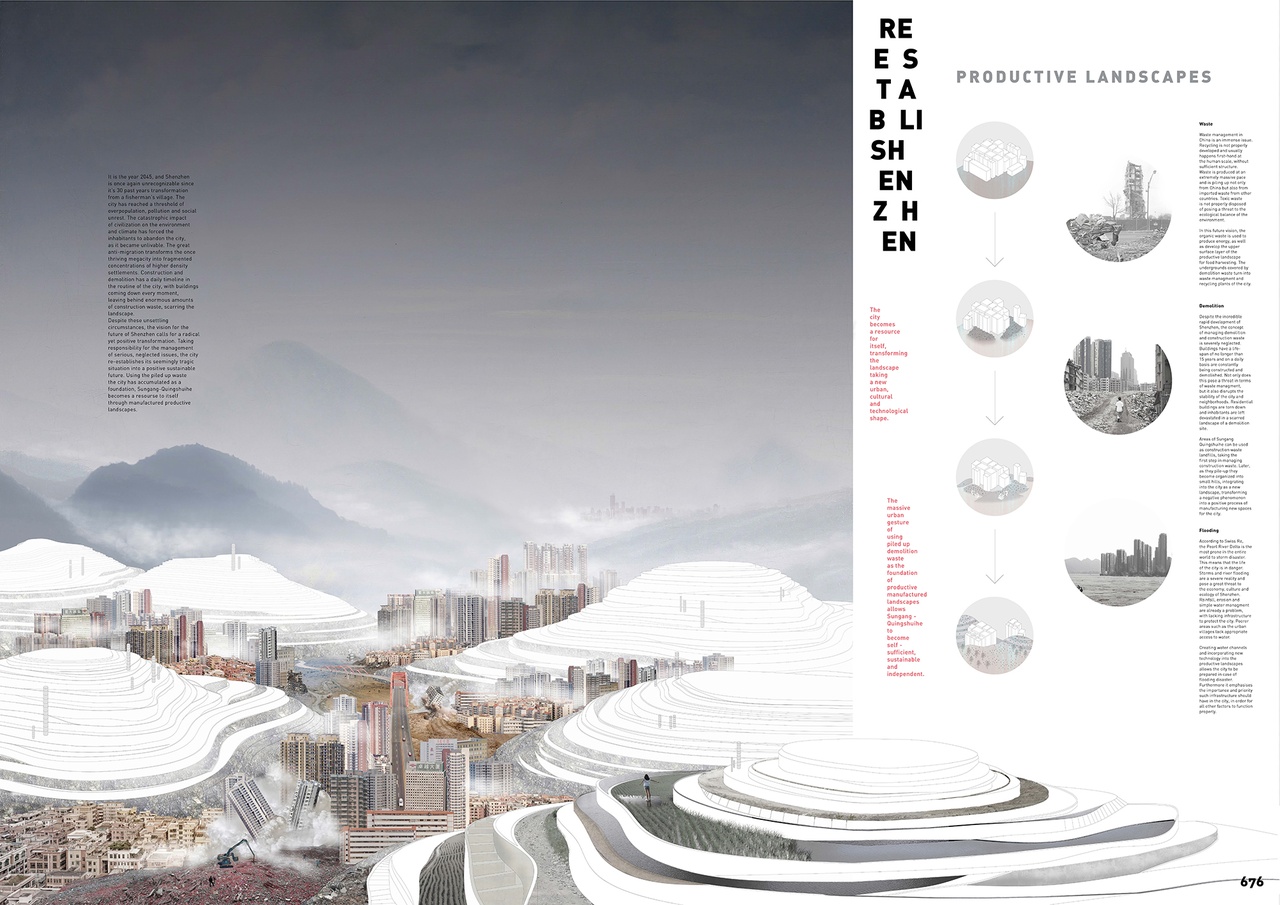On the occasion of the prizegiving ceremony of the Global Schindler Award 2015, held in Shenzhen, China, on 30 April 2015, two architecture students of the University of Liechtenstein distinguished themselves. In this worldwide competition, their design for the Chinese city of Shenzhen was one of 12 projects out of 250 entries to be nominated.
On the occasion of the prizegiving ceremony of the Global Schindler Award 2015, held in Shenzhen, China, on 30 April 2015, two architecture students of the University of Liechtenstein distinguished themselves. In this worldwide competition, their design for the Chinese city of Shenzhen was one of 12 projects out of 250 entries to be nominated.
The competition for barrier-free architecture comes with a prize fund of 150,000 US dollars. In the year 2015 for the first time it offered young architects worldwide the opportunity of having their work assessed by an international jury of acknowledged experts. Up to the closing date for entries, students from all over the world had submitted 250 entries for the Global Schindler Award. On the occasion of the prizegiving ceremony the two MA students of the University of Liechtenstein, Martyna Michalik from Poland and Hana Pleskačová from the Czech Republic, received a travel scholarship of 5000 dollars.

International award: the students Martyna Michalik (left of picture) and Hana Pleskačová (right of picture) with studio director Professor Peter A. Staub at the prizegiving ceremony in Shenzhen.
The task
The task had consisted in formulating a sustainable development strategy for the city of Shenzhen, one of the most densely populated cities in China. The proposal developed by Martyna Michalik and Hana Pleskačová meets this challenge by creating sustainable and productive landscapes from the quantities of building rubble the city generates. Their project was chosen to receive an award by a jury of twelve international experts headed by Professor Kees Christiaanse of ETH Zürich [the Swiss Federal Institute of Technology in Zurich].

‘We can learn a lot from the problems faced by other regions of our planet. The visionary approaches to a solution developed by the two students provide valuable food for thought with a view to sustainable spatial development, for the Alpine Rhine Valley region and Liechtenstein as well,’ said studio director Professor Peter A. Staub, commenting on the students’ success in the global competition. ‘A global competition like the Schindler Award is also a yardstick of the work we do at the University of Liechtenstein – and we can be very proud of this result.’

The prizewinning proposal ‘Productive Landscapes’ submitted for the Global Schindler Award 2015 by the two architecture students of the University of Liechtenstein, Martyna Michalik and Hana Pleskačová.
Re-establishing Shenzhen
In their proposal ‘Productive Landscapes’, the students develop a scenario for Shenzhen in the year 2045, when the city stands on the verge of overpopulation, environmental pollution and social unrest.

‘The challenge lay in our having to transpose ourselves into a completely different cultural, ecological and dynamic context, and then draw the appropriate conclusions. I think in the last resort this worked out positively by giving rise to a wholly novel point of view on the themes concerned,’ says architecture student Martyna Michalik.
A vision of productive landscapes
The municipal planning vision of the two MA students envisages a radical transformation. The city takes responsibility for coping with its serious and long-neglected problems, like waste disposal, demolition and flooding, and exchanges its precarious situation for a sustainable future. A layer of organic bio-waste gradually develops over the building rubble, which supports agriculture and the cultivation of foodstuffs and opens up new habitats for animals. While in the subsoil waste deposits are disposed of and recycled, plants generate energy for the city. On the surface new recreational facilities are created in the form of parks, hiking trails and viewpoints. ‘The more negative matter (waste) from the city gets piled into mountains, the more positive returns come back to the city from the landscape,’ is the students’ summary statement of their vision.
A creative atmosphere for study
Partially responsible for the success of their concept was the open, interdisciplinary atmosphere of the MA studios at the university’s Institute for Architecture and Spatial Development. At the Architecture MA studio of the University of Liechtenstein, the two students developed their idea with the help of input from their fellow students and with the support of renowned experts in the fields of sociology, municipal planning and communication.

‘The entire studio worked like an office – the greater part of the work during the semester consisted in research, and the elaboration of a guideline as a basis for all the decisions involved in the project,’ says Hana Pleskačová, describing the tone of her work at the Master’s Studio of the University of Liechtenstein.

